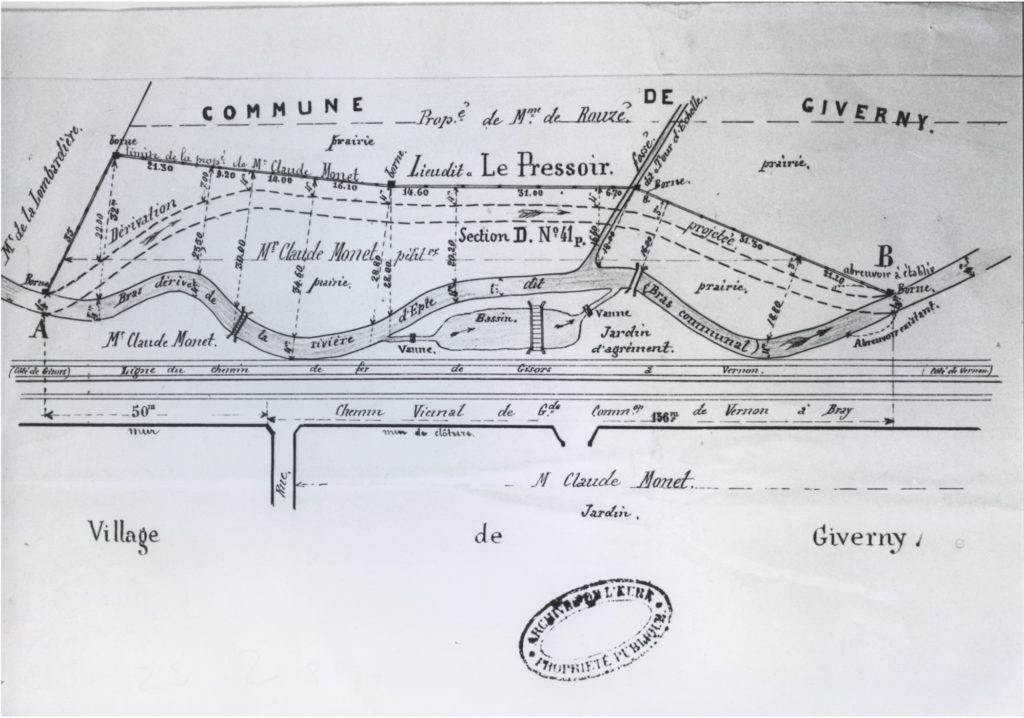
In Giverny, a small village located about 75km west of Paris, Claude Monet owned the “Pressoir” house as well as the gardens that surrounded it. He also rented a piece of land with a small body of water between the Chemin du Roy and the Epte river where he cultivated a few aquatic plants [Fig. 1]. In March 1893, Monet sought permission from the Prefect “to draw water from the Epte by digging a small ditch” of 60 to 70 cm in length to irrigate the pond. The town council denied Monet’s request but the artist appealed the decision in July and responded to allegations from the local population who feared the plants would poison the river. Monet argued that he would only grow “plants such as water lilies, reeds and irises of different varieties” already present in the Epte. Signing his letter “Claude Monet/artist painter,” Monet added that this was a leisurely endeavor only meant to “please the eye.”

The matter was revisited a few years later when Monet decided to increase the size of his pond [Fig. 2]. In a letter to the Prefect dated August 18, 1901, Monet wrote:
“Mister Prefect,
I am honored to ask for the authorisation to divert a stream of the Epte river called the “bras communal” into a property that belongs to me and which is located in the town of Giverny once the administrative procedures such project may require will have been fulfilled.
Sincerely,
Claude Monet
August 18, 1901
To Mister Prefect of Eure in Evreux”
After multiple exchanges between October and December 1901 with the public administration including Ponts et Chaussées, the Minister of Agriculture, the Sous-Préfecture of Andelys and the town of Giverny, Monet’s request was finally granted. In a letter dated December 11, 1901, the Prefect quoted the Article 644 of the civil code, which stated that “all landowners whose property is traversed by a stream can use it on their own premises at will as long as said stream is returned to its normal course when it exits the landowner’s property.” However, the town of Giverny added the following caveat: “if this pond used to cultivate aquatic plants becomes hazardous to public health, the authorization granted to Mr. Monet could be revoked.”

Monet was thus able to finalize his “Water Garden.” This mirror of light in which he immersed himself until the end of his life, was the ultimate source of his inspiration and the ground of experimentation from which he derived the great decorations of the Tuileries’ Orangerie.

